If you mention the word Vespa there’s always one person’s name that immediately springs to mind: Norrie Kerr. In a career spanning over six decades, he has done it all, from racing and development to running a major company within the industry. Showing no signs of slowing down Scootering takes a closer look at the man who has dedicated more than 50 years of his life to the Vespa scooter.

Only one choice
Born in Glasgow, aged 16 Norrie acquired his first scooter way back in 1966. The dilemma he faced at the time, was whether to choose a Lambretta or Vespa. Opting for the latter without hesitation, Norrie purchased a 152L2. This soon progressed to a Sportique in 1967, followed by a brand new 150 Sprint a year later as he quickly gained an affection for anything made by Piaggio. By 1967 Norrie had joined the Glasgow Vespa Club, becoming interested in the competition side that was beginning to grow.
Most events held at Vespa rallies at that time were a mix of gymkhanas and off-road trials, certainly north of the border. Taking influence from the top scooter trials riders at the time like Bob Young and Gordon Roper, Norrie quickly became hooked on entering competitions. To make sure he didn’t miss an event an old Vespa GS was bought as a backup machine to compete on in case the Sportique was damaged.
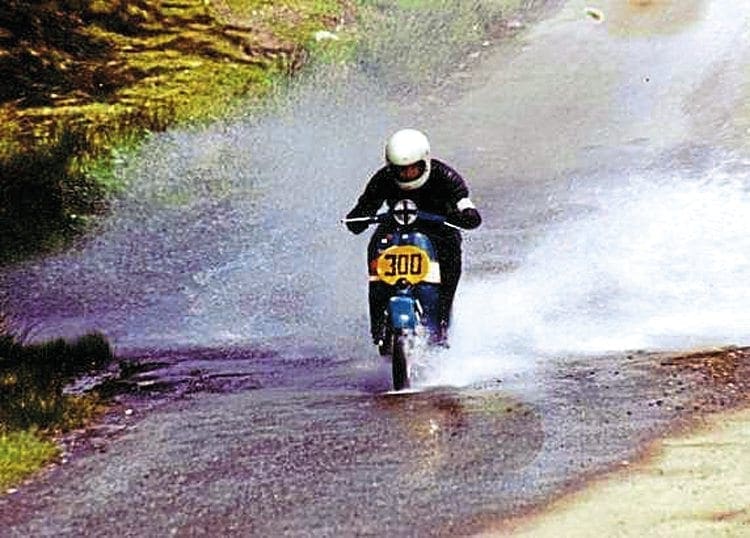
As Norrie’s keenness to enter more and more events began to grow so did his hunger to be competitive. As soon as a new Vespa model was introduced he bought it, including a 90SS and 180SS by 1969. Even so, in 1970 there was a venture into the world of Lambrettas when
Norrie acquired a Vega with the intention of taking it grass track racing. A Royspeed 125cc conversion was carried out and the machine prepared. This didn’t last long though as the rough terrain took its toll on the weakness of the frame and forks.
Ready to race
Though scooter circuit racing had been growing since the late 1960s, in reality, these were only regularity trials; official championships didn’t take place until 1970. Though Norrie was interested in entering, the main obstacle was the distances he would have to travel to compete. However, in 1972 he took the plunge at the Isle of Man scooter holiday week. Obtaining a one day licence, his first race was at Jurby airfield competing on a Vespa 90SS and coming second only to the British champion at the time, Colin Hart. This was enough to get him seriously interested… even if he couldn’t race regularly due to the travel costs.
It was from these early races that Norrie’s interest in tuning began to take shape. Though only basic work was undertaken to the engine it was nevertheless a significant step towards much more extensive tuning and engineering in years to come. Initially, everything was based on increasing speed, but at the same time reliability. Norrie would gain all his knowledge from reading books on the subject. With publications from Gordon Jennings, Roy Bacon and Grahame Bell he adapted their methods of two-stroke tuning to the Vespa engine. He measured the timings of the Vespa’s rotary valve system and attempted to improve it where possible to gain more power.
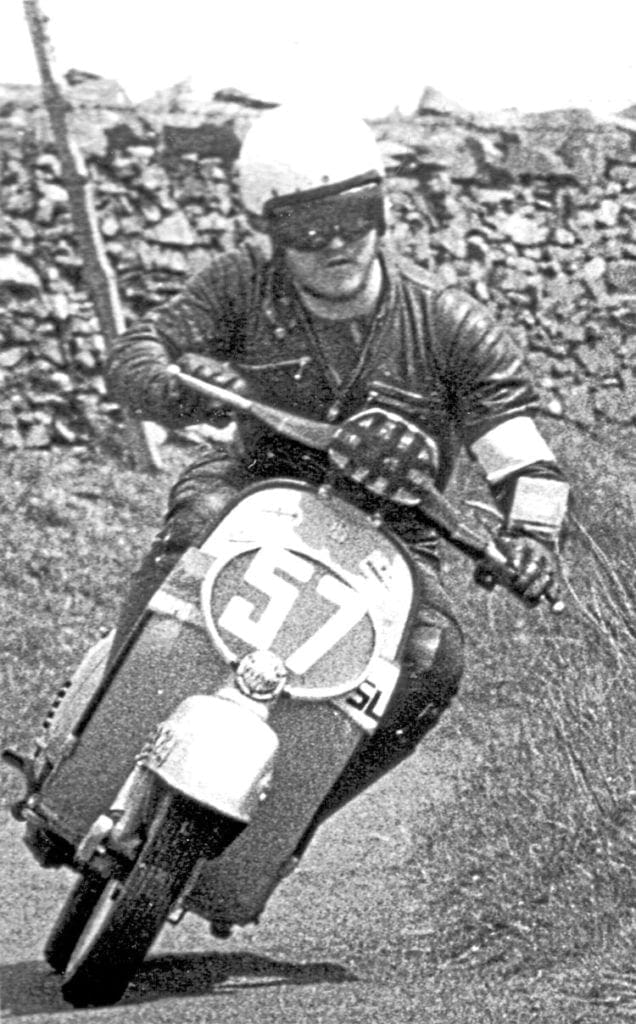
In 1978 Norrie moved to England to the town of Long Eaton in Derbyshire. This put him much closer to the tracks he often raced at while giving him more time to prepare for each meeting. Norrie’s first job after the move was for a company called Vessa (yes you heard it right) which repaired artificial legs. Once a week he would make the short trip to Leicester to a clinic there. Norrie had already made friends with another competitor nearby — Dave Webster. Dave lived just round the corner from the clinic and Norrie would pop in on his break to talk scooters.
Soon he and Dave were tuning scooters on a bigger scale, Norrie working on Vespas and Dave on Lambrettas from their home garages. With contacts made, Norrie would supply and deliver parts to Dave for his customers and in turn, Dave would supply Norrie. With the early 1980s scooter boom under way it soon became apparent that it would be beneficial to both of them if they set up a company, to cater for their customers. It would be much easier once they moved into proper premises so Midland Scooter Centre was born. By using their individual skills and expertise they were able to cater for both Lambretta and Vespa customers all under one roof. Combining their scooter racing abilities and engine tuning knowledge both on the track and in the workshop would help quickly establish MSC as one of the best businesses within the industry.
Established as a good Vespa rider on the racing scene in the early 1980s Norrie was now coming to the forefront of the sport. There was one more slight temptation to the Lambretta side when Dave Webster coerced Norrie into buying GP 150 from him. The performance was there but the riding style was different and Norrie felt uncomfortable changing between the two styles required. It was quickly sold off and from now on he would only concentrate on Vespas.
Water cooling
Now Norrie began thinking about water cooling for race engines. Maintaining a controlled temperature not only meant tighter tolerances allowing more power but also less chance of a component in the engine getting too hot, causing it to fail. Water cooling his engine was an idea thought of by Norrie himself; no one up to that point had even attempted it on a Vespa. Looking at cylinders from Suzuki and Yamaha engines convinced Norrie it was possible and he worked out there was just enough room to get the jacket around the cylinder and fit it in the frame.
Though the cylinder would undergo extensive work a lot of the other components had already been tried and tested on his air-cooled race engine. The crankshaft would now rev up to 12,000rpm and be the most highly stressed component. On LC1 a PK crank with its larger taper and double lipped crankcase seal would be used to great effect. On LC2 the crank was specially designed with a longer stroke giving the engine more torque, ideal for coming out of corners on many of the tight twisty tracks at that time.
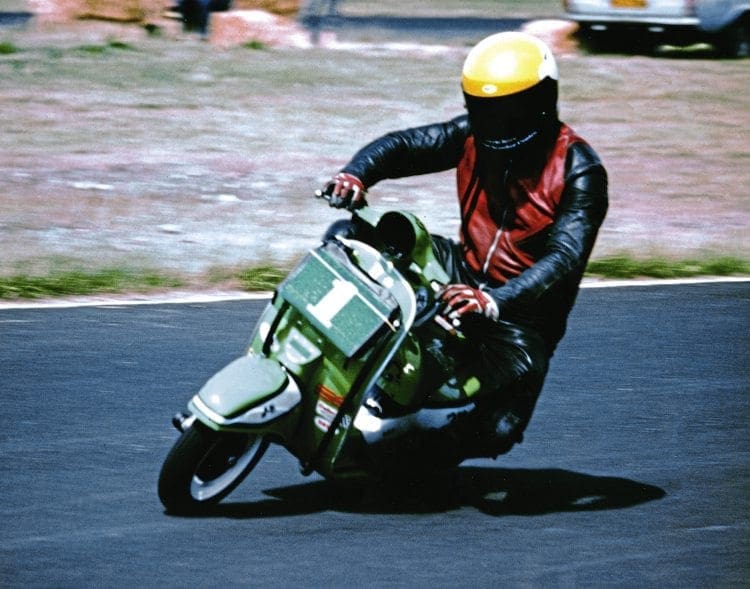
Though expensive, the cranks proved reliable. And though the gearing was limited, by using a standard four-speed small-frame gearbox and modifying the third gear from a V90 to replace the fourth gear, meant a much closer set of ratios was achieved. Though the clutch was upgraded with stronger springs it still only remained a three-plate version, which seems almost unthinkable today. Even so, it worked well. The ignition was the tried and tested Lumenition system popular with both Vespa and Lambretta racers.
The final piece of the jigsaw lay in the exhaust. As anyone with even basic two-stroke tuning knowledge knows, this component can alter the power characteristics so much and can mean the difference between winning a race or not. So it seemed rather odd that the exhaust for LC1 would be a modified Fresco expansion initially designed for a Lambretta. After extensive efforts to make it fit it worked and very well at that.
With all the development work done to the engine, the real test would now be out on the race track. Though Norrie wanted the performance from the engine he still strived for reliability, remembering the old racers’ quote “to finish first, first you must finish”. Though the engine did prove reliable, never letting him down, the same couldn’t be said of the water pump.
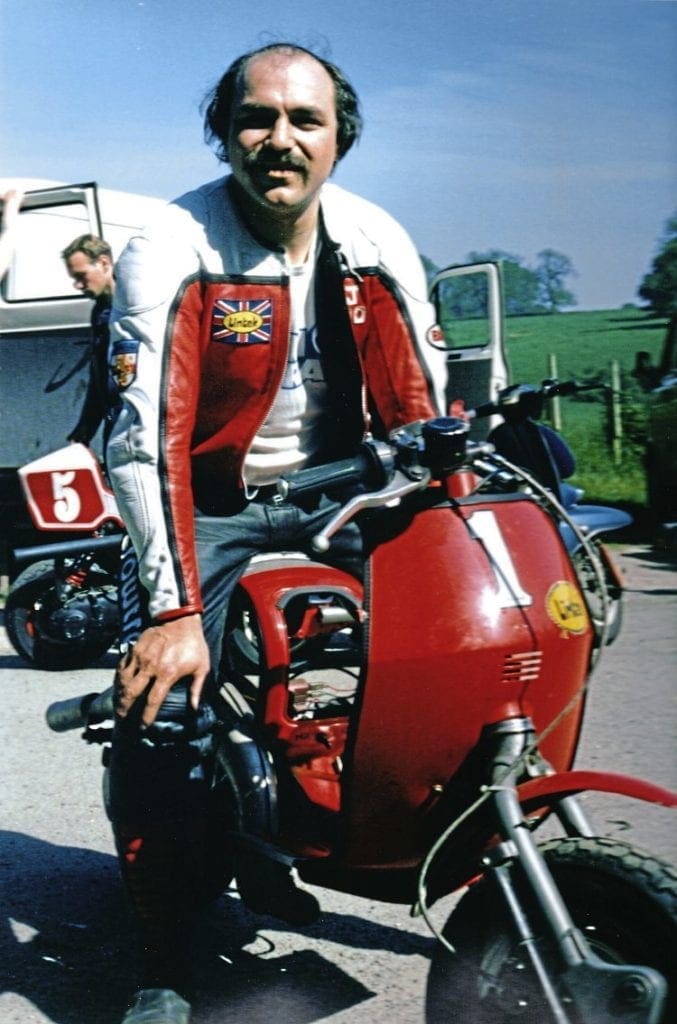
Originally using one from a caravan the plastic body was not strong enough as the vibration from the engine cracked the outer case. Other pumps from various sources including well-known car manufacturers also failed. It was back to the old caravan pump but this time with a homemade alloy casing which never cracked and is still on LC1 to this day.
Away from the engine the rest of the chassis remained fairly standard. The brakes were still the original Vespa drum ones fitted from the factory albeit with a different type of lining on the shoes. It must be remembered the small frame Vespa was small and light so didn’t have such a problem when slowing the mass of the machine and the rider down. The suspension again was the original factory specification shock absorber and dampers. The only change was to add a thicker viscosity fluid to alter the dampening effect to suit Norrie’s exact riding style. The tyres were originally IRC (remember them) later switching to the Michelin S1, which both Norrie and Dave Webster worked with Michelin on for the development of the tread and compound.
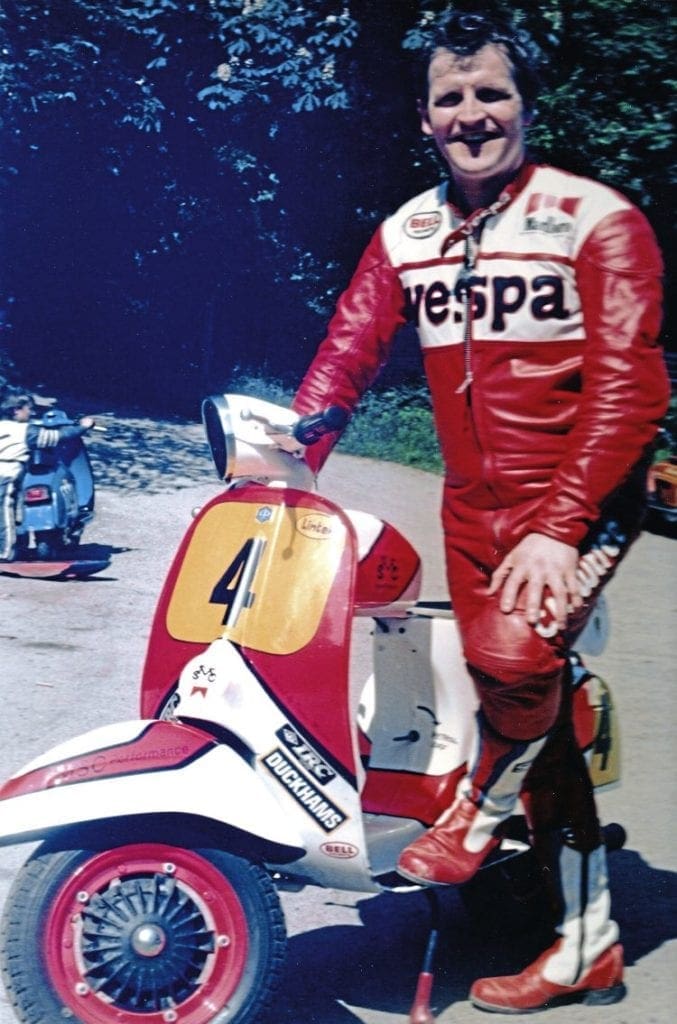
It soon became apparent that in the LC1 Norrie had not only developed a fast race machine but also one that could handle well, especially on the tighter twisty circuits. This helped propel him to the front of the grid and if he was not winning races he was always in the top few runners. Combined with the proven reliability this meant he could always be considered a serious championship contender year in year out and was feared by other riders. After LC1 came 2, 3 and 4 but everyone will always remember number 1 for its ground-breaking ideas.
Throughout the 1980s Norrie dominated the classes he entered as scooter racing entered its golden era. With several hundred licence holders the sport was at a highly competitive level. Just to get to the top was difficult enough but to stay there consistently season after season was a feat not many others could achieve. At the same time Dave Webster was dominating the Lambretta side of scooter racing and together they were formidable. The knock-on effect for the business was immense, as MSC became one of the biggest players in the scooter industry and certainly from a tuning point of view. There was no doubting all the work done on the track was a major part of the company’s success.
Breakaway
By the end of the decade, things began to change for both Norrie and MSC. The company was well established and holding its own but had to move with the times. Dave Webster was still racing but was slowly getting involved in other interests. Though Norrie continued to race competitively, he was coming to the later years of his career and knew he couldn’t carry on forever. Though MSC was still profitable Norrie felt he needed a new challenge and more than that, to be his own boss. The partnership he and Dave Webster built up had worked well over the years but they now had different ideas about how they wanted the business to move forward. With rumours circulating around the scootering world that there was trouble at MSC, it was decided that it would be better for both Norrie and Dave to sort the situation out quickly.
In 1990 Norrie left MSC for good to set up his own business within the industry. Though he and Dave had a lot to sort out the split wasn’t acrimonious, contrary to certain rumours at the time. This now left the both of them to concentrate on the future without holding each other back. Norrie acquired Malossi UK which at the time had an exclusive range of products, but as a business, it needed investment and someone to drive it forward. Norrie was the right person to do this and over the prevailing years has built the company up way beyond what anyone could have imagined.

The business model was different to most other scooter-related companies, in the fact that at that time, it supplied only trade and not the public direct. As the firm slowly built up the different brands it offered, it was decided to change the name to VE UK at the turn of the millennium. VE UK now supplies not only the UK but also dealers throughout Europe and the rest of the world. With the introduction of Malossi tech centres for selected dealers, they offer up to date advice and support.
From humble beginnings of one man, Norrie has built up a workforce of over 15 employees as VE UK plays a major and important role in the modern scooter industry.
Reflection
Norrie Kerr retired from scooter racing in 2001. By that time he had won a host of British championships among several track records and other accolades, making him one of the most decorated riders in the sport. Even though it was a tough decision to make, he knew it was the right thing to do and this didn’t mean he had to cut ties altogether. Actively supporting the sport he loved in the 1990s, in conjunction with Piaggio UK, they ran the Zip 70cc road race class. Introducing new riders to the sport of scooter racing it also started the careers of Leon Haslam and James Toseland, the latter going on to be a future world champion at the top level. Not content with this, Norrie is life president of the BSSO and continues to be dedicated to the promotion of the sport. He is also honorary vice president of the Vespa Club of Great Britain and a lifetime member of the LCGB.
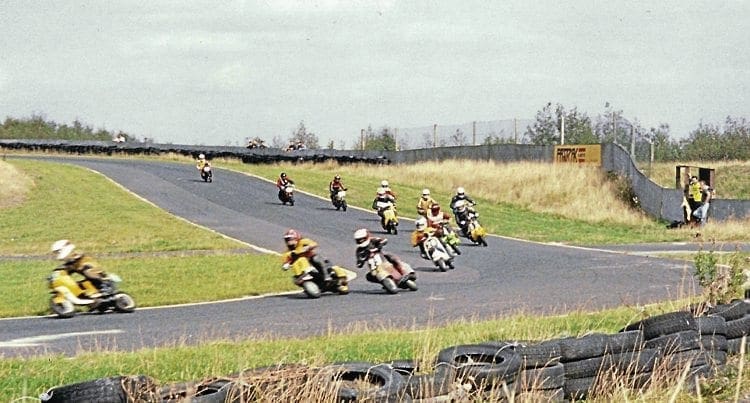
Asked about what he thinks of scooter racing today, Norrie is more than optimistic. Having raced through the glory days in the 1980s, to watching it almost finish two decades later, he is happy seeing it grow once again.
And finally
We couldn’t finish without mentioning Scooter & Scooterist magazine. From 1972 to 1986 it played an important role in keeping road or race scooter owners informed of what was going on within the scene. It helped bridge the gap after the demise of Scooter World until Scootering started in 1985. It was a business run from the front room of the house involving all the family. Once again proving Norrie’s dedication to scootering as a whole.
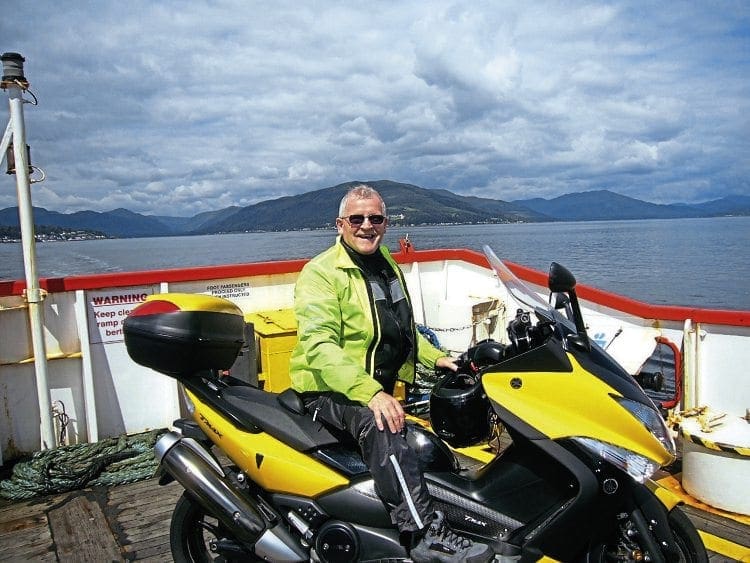
There is no doubt Norrie Kerr will always be remembered for his racing antics and the Legendary LC Vespas he built, but he is far more than that. He has dedicated his life to the scootering cause and continues to do so with a great passion.
Words: Stu Owen
Photographs supplied by: Norrie Kerr



